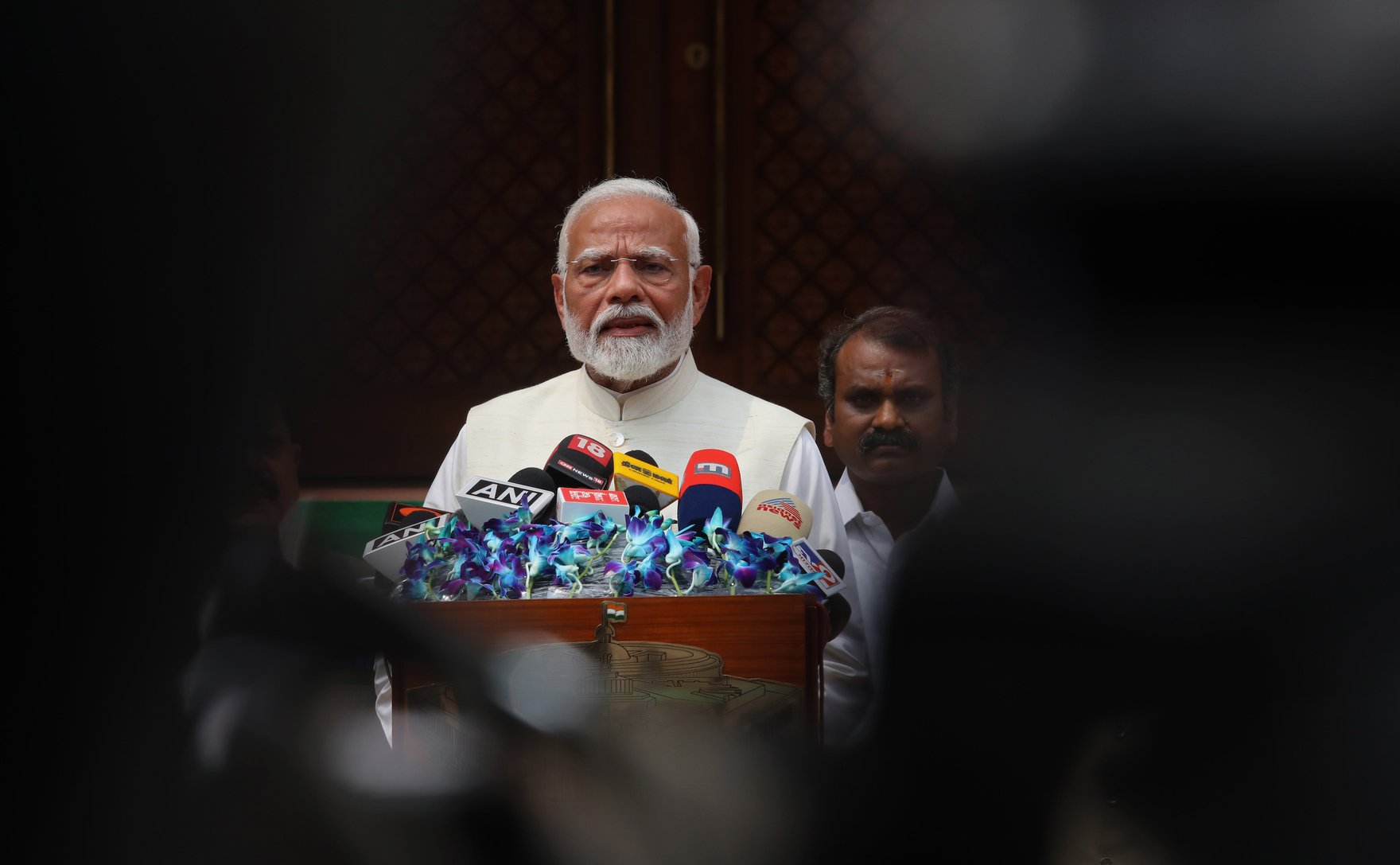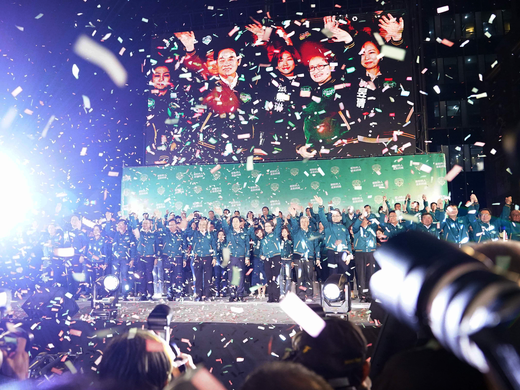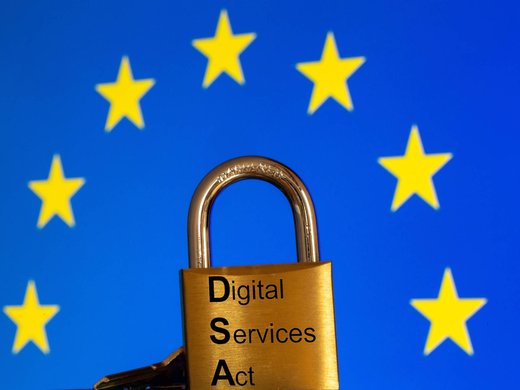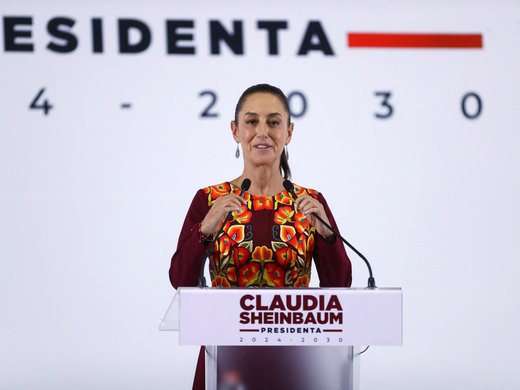The 2024 general election in India, a mammoth exercise that took place over seven phases and 44 days, produced a surprising verdict on June 4. The incumbent Bharatiya Janata Party (BJP), which has ruled in New Delhi since 2014, once again emerged as the single largest party. However, the party unexpectedly lost enough seats to require a formal coalition arrangement with its allies in the National Democratic Alliance, to secure a parliamentary majority.
It’s an opportune moment to examine the importance of new digital technologies and social media apps in these historic polls, and explore how they have reshaped the media ecosystem in the world’s largest democracy.
The innovative use of Twitter, now X, fuelled the political rise of Narendra Modi, enabling him to become prime minister a decade ago. Since then, his government has promoted technological innovations with tremendous zeal, as the key to bolstering effective governance. Following the launch of Digital India in 2015, a flagship initiative, Modi declared: “Technology is advancing citizen empowerment and democracy that once drew their strength from Constitutions.” The rapid expansion of Aadhaar, a massive apparatus to extend unique biometric identities to 1.4 billion residents, provided the foundation for a digital public infrastructure known as India Stack.
The BJP’s deft use of new digital technologies and social media apps has been part of a wider political agenda, however, to infuse Hindu nationalist beliefs into popular consciousness by reshaping the media ecosystem and wider public sphere. This process entailed two broad strategies. On the one hand, the BJP and its affiliates and supporters used social media applications, such as Twitter and Facebook, and the latest technological developments to spread their message. Reportedly, the BJP operates an astonishing five million WhatsApp groups in India.
On the other hand, the Modi government imposed greater restrictions on traditional news organizations and innovative digital platforms, by applying extant laws that impinge on media freedoms more forcefully as well as by devising new regulations.
The ramifications have transformed the mediascape of the world’s largest democracy. Today, an estimated 760 million individuals in India actively use the internet. Approximately 400 million use WhatsApp for daily communication and to gather information. The number of those who visit YouTube regularly, roughly 460 million, represent the platform’s largest market in the world. A growing number, especially youth, use it for news. Popular channels on the platform have tens of millions of subscribers and more than a billion views each. A survey conducted in 2022 showed that mainstream TV channels were the dominant news source. But declining trust in their credibility has driven more consumers to YouTube and WhatsApp.
The expansion of this digital media universe has also encouraged the rapid spread of fake news, misinformation and disinformation. The growth of divisive rhetoric and hate speech has coarsened public discourse and inflamed social polarization. A 2019 study of WhatsApp messaging found that both the BJP and Congress Party employed “divisive and conspiratorial” content — the former more than the latter. Reportedly, Facebook had commissioned a report investigating these issues as well as the creation of bots interfering with elections. But the company delayed its release, presumably to avoid antagonizing political authorities and the risk of losing access to its biggest market. A significant number of shows on YouTube are not fact-based yet present themselves as conventional news channels.
To police the boundaries of acceptability, militant supporters of Hindu nationalism have attacked companies online that promote secular images and cosmopolitan values, leading many to withdraw advertisements that cause perceived offences. In 2021, facing massive protests against controversial agricultural reforms, the BJP sought to delegitimize the farmers’ demands on social media by claiming they were sponsored by Khalistani separatists. However, investigations revealed a network of fake accounts on Facebook, Instagram and Twitter, which used Sikh names to bolster the government’s stance and discredit alternative views.
In addition, the Modi government has suppressed media organizations and digital sites that it deems too critical.
In addition, the Modi government has suppressed media organizations and digital sites that it deems too critical. Since 2014, the Ministry of Home Affairs has withdrawn more than 200 licences from TV channels that purportedly had failed to abide by the Cable Television Networks (Regulation) Act 1995, which empowers authorities to suspend registration of a channel “for a specific period in public interest or in the interest of national security.”
Over the last decade, the government has repeatedly attempted to establish a social media communications hub, ostensibly to facilitate the flow of information. However, each tender would also have allowed the government to monitor how citizens use social media, “collective sentiments and overall trends.” In early 2021, the Modi government promulgated the Information Technology (Intermediary Guidelines and Digital Media Ethics Code) Rules, permitting authorities to block “public access of any information or part thereof through any computer resource” in situations of “emergency.” These included “national security, public order, communal harmony and most curiously, friendly relations with foreign States.”
The new IT rules triggered many legal petitions. Nonetheless, the Ministry of Information and Broadcasting blocked roughly three dozen YouTube channels in the spring of 2022, often without providing a reason. In early 2023, the Ministry of Electronics and Information Technology published draft rules that required digital platforms such as Twitter/X and Facebook to remove posts deemed “fake news” by the Press Information Bureau, which serves the executive branch of the Government of India.
Yet authorities used the new regulation to prevent online servers from sharing links to a BBC documentary that critically re-examined the prime minister’s controversial earlier career. Tax officials subsequently raided the BBC’s offices in India. Since 2017, India has led the world in the number of internet shutdowns, ostensibly in response to reports of communal violence.
The 2024 Election Campaign
Digital media were a key site of partisan contestation in the 2024 general election. The last national contest, in 2019, was dubbed the “WhatsApp election.” But some analysts argued that 2024 was the first since independence to be truly driven by social media. The deep war chest and powerful digital apparatus of the BJP and its affiliates gave the ruling party a clear advantage across several domains.
First, aggregate spending on digital communication between January and April, when voting began, rose to Rs 288 crore, about $47-million CDN — an astonishing tenfold increase compared to the corresponding period in 2019. Party campaigns employed hundreds of graduates from India’s leading professional schools with big data skills to mobilize key constituencies.
Yet the relatively veiled activities of this “hidden army of Indian election ‘consultants,’” and whether they adhered to electoral rules when harvesting such data, raised genuine concerns.
The BJP spent more than double the Congress Party on Google Ads, the most important venue for political ads, and far more than other parties. Similarly, the ruling party outspent its main electoral opponent by a similar factor on Facebook, the second-most-important platform. More than 75 percent of urban respondents acknowledged seeing online political messaging in general: roughly 80 percent of respondents cited the visibility of the BJP.
Moreover, three-quarters of the top 20 advertisers on Facebook and Instagram during the election were surrogate accounts. Many outspent regional opposition parties. Some doctored videos spread disinformation about senior leaders of the ruling party. But more distributed ads with communal overtones targeting minority communities.
Second, many shows on YouTube, pretending to offer fact-based news, peddled disinformation as well as anti-Muslim rhetoric to bolster support for the BJP. Popular channels boasted tens of millions of subscribers and more than a billion views each. Individual stars on social media offered parties a chance to connect with younger voters, who comprised the majority of the electorate. Yet their interviews were often scripted and avoided critical scrutiny; it was also difficult to know whether they had been paid. The vast majority of interviews conducted by prominent influencers on YouTube involved BJP candidates.
Third, the use of artificial intelligence (AI) acquired greater salience in the 2024 election. AI-generated images of major politicians circulated widely. Modi dominated platforms such as Instagram, depicting him as a divine Hindu ruler and garnering millions of likes and views. Yet it was unclear whether the producers of such content had fully disclosed its artificiality.
The BJP also deployed AI to reach potential voters beyond its political bastions in the Hindi belt. An AI-translation tool, called Bhashini, came pre-installed on the NaMo (Narendra Modi) app to reach voters in southern India. More than 50 million AI-generated calls were made, mimicking politicians’ voices in the two months preceding the election. The BJP and Congress Party accused each other of spreading deep-fake content online.
Inadequate Regulation and Delayed Action
In 2019, the Election Commission of India (ECI) expanded the Model Code of Conduct (MCC), a set of norms to maintain the integrity of elections, to cover digital media campaigns. Its voluntary code of ethics required parties to disclose their spending on social media ads and candidates to submit their social media accounts. The body also launched a cVIGIL app to allow voters to report alleged violations at polling stations.
Yet the ECI’s conduct in the 2024 election drew severe criticism. It ignored speeches by the prime minister that clearly violated the MCC, while censuring opposition parties to a greater extent, and delayed publishing the number of votes cast after each phase concluded. The cVIGIL app, which had various user data vulnerabilities according to cybersecurity experts, could not upload pre-recorded videos or link to any social media content.
Finally, government ministries launched an online campaign, “Viksit Bharat,” to highlight their accomplishments in office and future ambitions through WhatsApp messages. The ECI ordered the campaign to stop after receiving complaints that it violated the MCC.
Despite the significant advantages enjoyed by the BJP and largely retaining its overall vote share, however, the ruling party lost enough seats to deny it a parliamentary majority.
In addition, independent journalists and civic organizations exposed poor regulation on various sites. To test whether Meta was strictly implementing policies to counter disinformation and hate speech, India Civil Watch International submitted AI-manipulated political ads for approval. Many contained false claims about opposition leaders, well-known slurs toward Muslims in India and Hindu supremacist language.
Yet the majority received authorization. Similarly, Global Witness and Access Now submitted ads to YouTube in multiple languages to see whether Google would deny any that encouraged voter suppression and incitement to violence. The errant ads were approved within a 24-hour review period. In each case, these civic organizations removed the ads before they could be distributed. Complaints to the ECI about digital videos that violated the MCC compelled its authorities to order their removal, but in several instances, voting had already taken place.
Signs the Tide Is Turning?
Despite the significant advantages enjoyed by the BJP and largely retaining its overall vote share, however, the ruling party lost enough seats to deny it a parliamentary majority. The multiparty alliance it has led since 2014, the National Democratic Alliance, now constitutes a formal coalition government. Many distinct factors, varying across the diversity of states that comprise India’s federal parliamentary democracy, contributed to this unexpected setback. Digital platforms created opportunities for social critics and opposition parties to counter political narratives that favoured the ruling party on TV and online. The electoral outcome also exposed the limits of sowing disinformation through ground campaigns and social media in the face of harder material realities.
First, after struggling for a decade to find his feet, the presumptive leader of the Congress Party, Rahul Gandhi, won popular support for undertaking two marathon political treks across the country. He honed its key political messages: the BJP posed a threat to the secular constitution, political stability and democratic future of India, while its close relations with rich tycoons had worsened economic inequalities. The party also used social media more skillfully, pushing its critique on WhatsApp and YouTube before and during the campaign.
Second, although social media influencers generally seemed to favour the BJP, some highlighted the dangers of autocracy and frustrated economic ambitions. A striking example was Dhruv Rathee, a young influencer based in Germany, whose video “Is India becoming a dictatorship?” drew more than 25 million views. Indeed, as Neelanjan Sircar and Yamini Aiyar argue, the clear pro-government bias of many mainstream media paradoxically created a demand for critical alternative views. Digital platforms provided a space for them to emerge.
Finally, while the digital space is now a crucial political battleground that shapes public opinion through fake news and hate speech, as well as through vital information and progressive appeals, the discursive world inevitably contends with material realities that influence voters’ choices, too.
The BJP and its supporters outspent partisan rivals on numerous platforms by a wide margin. Yet higher digital expenditures could not guarantee better electoral outcomes. The ruling party improved its seat tally in some regions in 2024, such as Odisha and Telangana, where it spent more than in 2019. Yet it suffered important setbacks in three states where it spent the most: Maharashtra, West Bengal and Uttar Pradesh.
The digital ecosystem in India is a deeply contested space. Major newspapers of record, such as The Indian Express, The Hindu, Deccan Herald, The Telegraph and Hindustan Times, and critical periodicals, from Frontline and Economic & Political Weekly to The Caravan, remain vital sources of reporting and analysis.
Nonetheless, more reactionary voices have dominated both traditional broadcast organizations and social media over the last decade. Thus far, the root source of fake news, divisive rhetoric and hate speech lies in the domestic arena.
Yet these general trends have simultaneously encouraged progressive voices to emerge, especially in the digital space. Seasoned journalists and new voices have established digital platforms, such as The Wire, Scroll.in and Newslaundry, or shows on YouTube, such as the one hosted by former NDTV news anchor Ravish Kumar. Individual social influencers have created niche spaces. All of these outlets have become vital sites of impartial reporting and critical analysis.
That said, they possess far more limited resources compared to large media newsrooms. Media fragmentation and the algorithms that govern the internet risk exacerbating social polarization, weakening the link between parties and citizens and balkanizing the larger public sphere.



